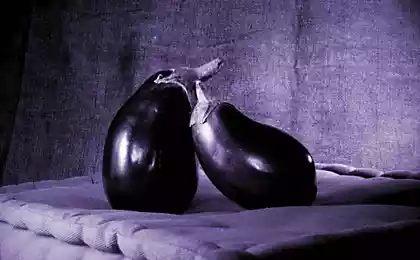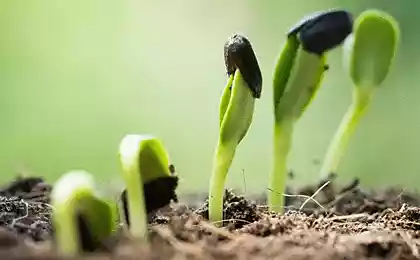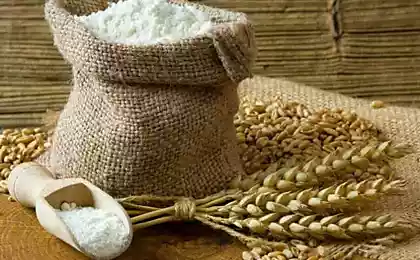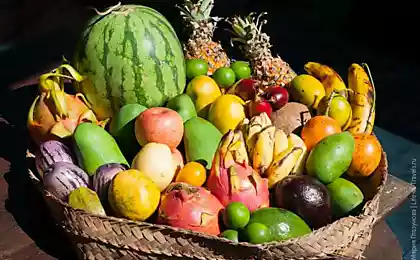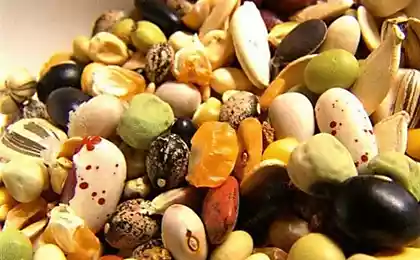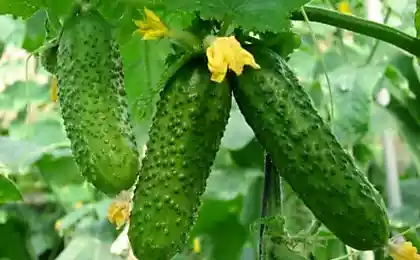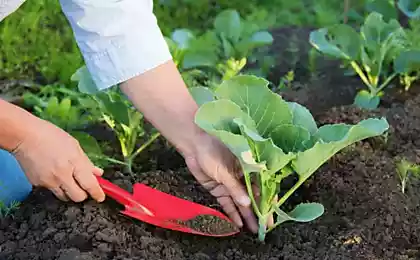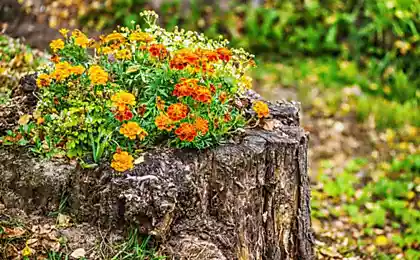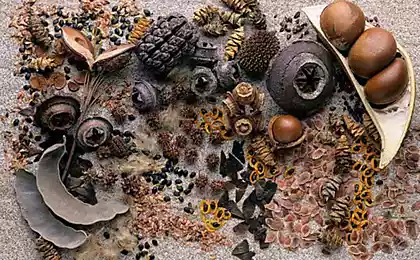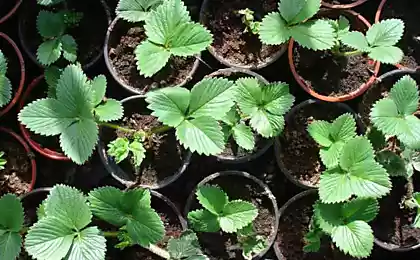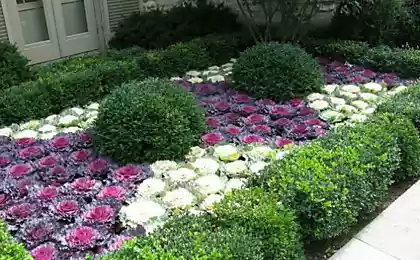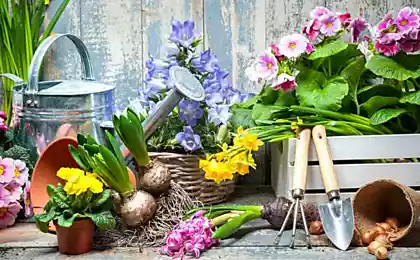839
Ecological seeds old popular varieties of plants
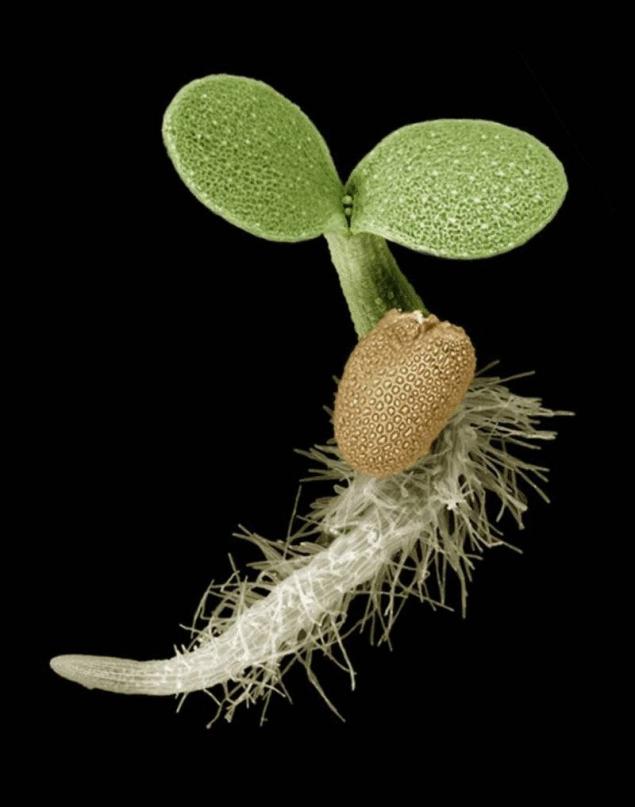
Today there are 5 corporations that control the 3/4 of vegetable seeds throughout the world.
When they bought up all the seed producers in the world, then eliminate all old varieties, which are themselves multiplied and replaced them with F1 hybrids.
Why so many are sold F1 hybrids? They taste better, more fruitful, less maintenance? No. It is advantageous to large corporations producing seeds.
What are old varieties of vegetables, cereals, legumes and fruit crops? How are they different from new varieties, hybrids and transgenic plants? Why old varieties better ?
We list some properties of old varieties:1. High taste
The main goal, which forces us to abandon hybrids and artificially bred varieties is the one that the old varieties are much tastier than the hybrid. It so happens that hybrid varieties of taste do not possess.
2. The simplicity of the Old varieties can grow in semi-wild conditions that do not require a high level of modern agricultural machinery (fertilizing, artificial fertilizers, protection from pests and diseases with the help of special chemicals, the total destruction of weeds) and can even "forgive" some mistakes in farming practices (i.e. some of our little mistakes in farming will have a total impact on the crop).
Of course, this does not mean that the plants are old varieties can grow in the desert, without water, soil or in the Arctic ice without shelter, etc. They, of course, you need to create good, acceptable conditions for life (which is actually what gives permaculture) – else they will create themselves and will bring the harvest. You should not have any illusions on this score and need to understand the difference between the creation of the necessary conditions (attentive observation of the growth of the plants, the adjustment, if required) on the one hand and daily care (watering, fertilizing, spraying against disease and pests, weed management) on the other hand. This can be compared with known popular expression: to feed a person, you can bring him the fish and then to bring every day, and you can teach him to fish himself. So in the case of permaculture and old varieties we create the conditions that give plants the ability to get the nutrition needed by his / her own forces to defend themselves and to adapt. And in the case of traditional cultivation techniques and new varieties-hybrids we are forced every day to "bring the fish" — i.e., to supply with food, to protect against the adverse effects of the environment, etc.
3. Plasticity must be noted Here that one of the most important properties of a variety is its ability to adapt (adapt) to certain environmental conditions and technologies of cultivation. So depending on the degree of manifestation of this property varieties are divided into:
Plastic – variety with wide adaptability.
Non-plastic varieties with a narrow adaptability.
Old varieties of cultivated plants are plastic.
This means that if you change the environmental conditions: when weather anomalies or in the case of cultivation in a different climate zone (different from that which was obtained the seed of this plant and where it grew generations of his ancestors,) the plant is much more likely to survive, to bring a crop to produce viable offspring and pass these newly acquired properties (resistance to all experienced anomalies and adaptation to new soil and climatic conditions) at the genetic level.
4. The ability to produce viable progeny, persist in the process of reproduction. Old varieties produce viable offspring (seeds) in contrast to genetically modified plants and some hybrid varieties are unable to reproduce themselves.
In addition, the varieties, especially old (they have this ability was tested and was fixed for centuries), is able to save your valuable unique properties inherent to a specific variety (if seed production is conducted with a spatial isolation of varieties and types that can Perepelitsa).
Moreover, the plants of the old varieties are better able to accumulate (due to the wide adaptability), and pass to their offspring useful signs they acquired in the process of life (resistance to abnormal weather conditions, adaptation to soil and climatic conditions of a particular area and plot where they grow).
5. High content and balanced (harmonious) combination of biologically active substances. Most rich in biologically active substances and the least changed by the selection of wild edible plants. Of cultivated plants that we grow in their gardens and in the gardens, to the wild edible plants in origin (genetically), the properties and composition are closest plants of the old local varieties. A good example of the old varieties of wheat ("wild" wheat can not, she has no wild types) spelt, spelt is a unique nourishing properties which strikingly distinguish them from the "newer" species and varieties of wheat.
For comparison, let us characterize new varieties in a similar qualitative features:
In contrast to the old varieties new varieties and hybrids are very picky about growing conditions and dependancy, because man has taught them to ensure that he preserves and protects them from all external influences, supplying water and nutrients. As a result of new varieties and hybrids represent a kind of capricious "greenhouse" creatures, incapable of independent life without human intervention.
New varieties and hybrids of non-plastic or less plastic than the old one, that is, to adapt to the abnormal (heat, drought, wet or cool summer), or new conditions it is difficult or impossible, and even more difficult to wait in such conditions they yield.
In addition, hybrids are not able to transfer their properties to offspring. Their offspring is the so-called splitting attributes. This means that collecting and sowing seeds from hybrid plants will get a strange mix of assorted plants, not all of which will bring a decent harvest. Genetically modified plants, and some hybrids, are not able to produce viable seed, i.e., they are sterile.
Biochemical composition of fruits of plants of new varieties and hybrids poorer than the old varieties. The decrease in the content of biologically active substances from fruits of plants of new varieties and hybrids can be noticed, comparing them with wild and old varieties. It is easy to see how with the acquisition of one of the so-called economically valuable properties lost other important properties: the odor — esters, the taste, the useful minerals. So were removed the plants with larger fruits, but weakened taste and smell (a good example for comparison, wild strawberry and garden strawberry). Fruit that are well tolerated in transportation, lost its tender juicy texture and with it your rich taste (the tomatoes of old and new varieties). Old varieties of cucumbers (heirloom, pollinated by bees) is significantly tastier new self-pollinated varieties and hybrids. Old species and varieties of wheat, when compared to biochemical composition with new varieties, too, much superior to the last and in protein and other important components.
What explains this fundamental difference between old varieties from new varieties and hybrids? 1. Genotypic heterogeneity (wide set of genes), characteristic of most old varieties, and in front of genotypic uniformity of new varieties and hybrids.
Old varieties – it is mostly grade-population.
Sort-population – grade perekrestimsya or self-pollinating culture, obtained by mass selecting and combining different genotypic plants.
The key here is that the similarities in external characteristics (phenotype) and similarity (vinovnosti) terms of economically valuable traits (earliness, storability, palatability), and the ability to pass these characteristics on to offspring, plants old local varieties are within the same class slightly different set of genes (genotype).
That their property (a difference in genotype at the similarity in external features) of the old local varieties is very similar to the wild species from which they actually happened. So, obey the same environmental laws as wild plants in the natural world. In this case, one of the most important property of cultivated plants of old varieties is their ability to adapt to various environmental changes. Due to just presence within one species-a population of plants with similar but not identical set of genes (genotype). A large set of various genes within one species-population gives a chance to the populations to survive at the expense of those plants genetic makeup which allows anyway to adapt to the new environment. That is the phenomenon that causes such a property old varieties as plasticity.
New varieties and especially hybrids do not have in stock such a variety of genes as varieties-populations. In the case of new varieties is the result of the desire for sameness plants, vinovnosti fruit size, shape, ripening, because it facilitates maintenance and allows to mechanize the process of collecting and processing of the crop.
In the case of hybrids – neither of which the diversity of the genotype of speech in General can not be, as in plants belonging to the same hybrid class I genotype is almost identical.
2. The test of time (these are not empty words – and the normal pilot process)
Plant old varieties over decades, centuries probiralis and adapted to different climatic conditions of certain localities have survived in various abnormal weather conditions while maintaining their individual varietal characteristics. The plants are old varieties passed on to their offspring the ability to survive in all the variety of conditions which they and their ancestors have experienced. New varieties and hybrids of this long period of field testing in different climatic and soil conditions, to boast, to put it mildly, I can't. Moreover, the newer the variety, the less was it a trial period (early, before allow variety in the state register, its much longer and more thoroughly felt than now). To accumulate and pass on to posterity useful characteristics, the new varieties just don't have time! And hybrids, as we know, in General, are not capable of. published
Source: www.pervorod.ru/collection/vse-semena
What Google knows about us: 6 links that will tell everything about You
3 ineffective and harmful exercises for the abs


